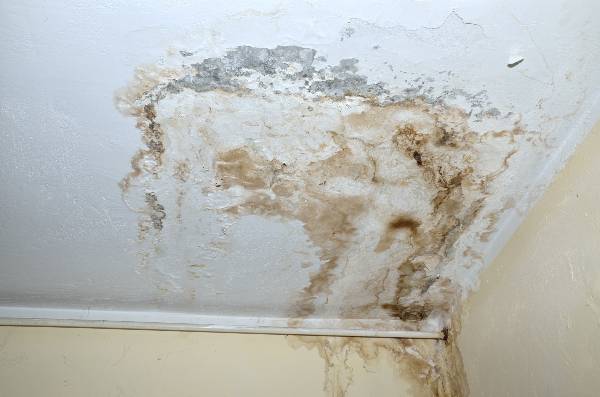Locating Concealed Water Line Leaks: Six Clever Hacks
Locating Concealed Water Line Leaks: Six Clever Hacks
Blog Article
They are making a few good pointers relating to Locating water leaks in general in the article directly below.

Early detection of leaking water lines can mitigate a prospective catastrophe. Some tiny water leakages might not be visible.
1. Examine the Water Meter
Every house has a water meter. Checking it is a guaranteed manner in which aids you uncover leakages. For beginners, shut off all the water sources. Ensure no person will flush, use the tap, shower, run the cleaning device or dishwashing machine. From there, most likely to the meter and watch if it will transform. Since no one is using it, there need to be no activities. That suggests a fast-moving leak if it relocates. Similarly, if you identify no changes, wait a hr or 2 as well as examine back again. This suggests you might have a slow leakage that can even be underground.
2. Examine Water Usage
If you find abrupt changes, despite your consumption being the same, it indicates that you have leakages in your plumbing system. An abrupt spike in your costs indicates a fast-moving leak.
On the other hand, a stable increase monthly, even with the very same routines, reveals you have a sluggish leak that's also gradually escalating. Call a plumber to thoroughly inspect your residential property, especially if you really feel a cozy location on your floor with piping underneath.
3. Do a Food Coloring Examination
30% comes from commodes when it comes to water usage. Examination to see if they are running effectively. Decline flecks of food color in the container and also wait 10 minutes. There's a leakage in between the tank and also bowl if the shade in some way infiltrates your dish throughout that time without flushing.
4. Asses Exterior Lines
Don't neglect to check your outside water lines too. Test spigots by affixing a garden hose pipe. Ought to water seep out of the link, you have a loosened rubber gasket. Change this and ensure all links are tight. If you have actually obtained a lawn sprinkler, it will help get it skillfully examined and also maintained every year. One tiny leakage can waste lots of water and also increase your water bill.
5. Check and also Assess the Scenario
Homeowners ought to make it a practice to examine under the sink counters and also also inside cabinets for any bad odor or mold and mildew development. These 2 warnings indicate a leak so timely interest is needed. Doing routine evaluations, even bi-annually, can save you from a significant trouble.
If you recognize your residence is currently old, keep a careful eye on your heaters, hose pipes, pipes etc. Look for discolorations and weakening as the majority of pipelines and also home appliances have a life expectancy. They will additionally naturally deteriorate due to wear and tear. Do not wait for it to intensify if you think leaking water lines in your plumbing system. Call a specialist plumber right away so you do not end up with an awful mess in your home.
Early detection of dripping water lines can reduce a possible disaster. Some tiny water leakages might not be visible. Checking it is a surefire means that helps you find leaks. One small leakage can throw away bunches of water and increase your water expense.
If you suspect dripping water lines in your plumbing system, do not wait for it to escalate.
WARNING SIGNS OF WATER LEAKAGE BEHIND THE WALL
PERSISTENT MUSTY ODORS
As water slowly drips from a leaky pipe inside the wall, flooring and sheetrock stay damp and develop an odor similar to wet cardboard. It generates a musty smell that can help you find hidden leaks.
MOLD IN UNUSUAL AREAS
Mold usually grows in wet areas like kitchens, baths and laundry rooms. If you spot the stuff on walls or baseboards in other rooms of the house, it’s a good indicator of undetected water leaks.
STAINS THAT GROW
When mold thrives around a leaky pipe, it sometimes takes hold on the inside surface of the affected wall. A growing stain on otherwise clean sheetrock is often your sign of a hidden plumbing problem.
PEELING OR BUBBLING WALLPAPER / PAINT
This clue is easy to miss in rooms that don’t get much use. When you see wallpaper separating along seams or paint bubbling or flaking off the wall, blame sheetrock that stays wet because of an undetected leak.
BUCKLED CEILINGS AND STAINED FLOORS
If ceilings or floors in bathrooms, kitchens or laundry areas develop structural problems, don’t rule out constant damp inside the walls. Wet sheetrock can affect adjacent framing, flooring and ceilings.
https://www.servicemasterbyzaba.com/blog/how-to-detect-water-leakage-in-walls/

As a passionate person who reads about Hacks to detect leaks, I figured sharing that post was necessary. Sharing is caring. Helping people is fun. We love reading our article about Top leak detection hacks.
For instant fixes, dial! Report this page